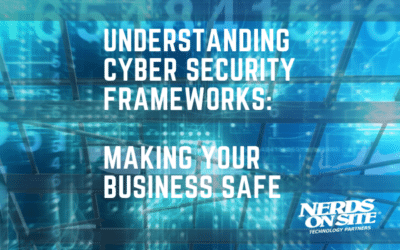Traditional cyber security and monitoring let you know you have a problem when it’s too late; the SME Edge stops that problem from ever happening. Comprehensive threat protection from phishing & ransomware for small-and-medium enterprises.
Article Contents
This post is the second of a series looking into the features & benefits of the SME Edge. If you want to start at the beginning, check out Introducing the SME Edge: Comprehensive IT Security For SMEs.
What is Zero Trust Web Filtering?
Before we jump into the Zero Trust aspect, I will cover the basics of web filtering.
Traditional Web Filtering
Web filtering has been around since the 1990s and works by allowing or disallowing access to a pre-determined list of web addresses or IPs.
Traditional web filtering works on a manual allow, block list, or combination. When a user attempts to access one of these addresses, a notice will be presented that the business or institution has blocked access to that resource or website.
Much like modern-day anti-viruses, these lists can be dynamic & ever-growing based on newly available data from the solution providers.
As these addresses are added manually, they still allow the possibility to connect to newly created resources and often lack the ability to dynamically block content that has been delivered through the allow listed website.
An example of this would be Malvertising. On-page adverts are not checked manually by ad providers and are not always safe. Millions of websites display ads as a way to earn an income while providing free content to users.
Cybercriminals have begun leveraging this technic to deliver ransomware, malware, and other nefarious programs through newly created websites with an ad on popular search engine keywords.
With 252,000 new websites created every day worldwide, a not-insignificant portion of these is made with poor intention in mind.
Introducing Zero Trust Web Filtering
Zero Trust Web Filtering works on the understanding that the internet is a scary place and nothing should be trusted.
For our Client’s that already have SME Edge, rather than utilizing the traditional internet security model of allowing everything and deciding what to block, they enjoy the benefits of blocking all and choosing what to allow.
This is achieved utilizing patented adaptive-AI technology, Don’t Talk to Strangers (DTTS)®. DTTS blocks connections to and from your network until the connection has been deemed safe to trust.
As this is network-governed protection, it doesn’t rely on specific web addresses but instead on the underlying IP addresses. So in the example used above, no advertisement would be displayed when protected by the SME Edge.
If you’re technically minded, feel free to watch our co-founder & Chief Technology Officer David Redekop talk about how it works at the RSA conference in 2022.

The most exciting takeaway from the talk is that the average organization of 50,000 or more employees only needs about 15,000 websites to operate in full (actual Client data). With over 1.6 billion websites today and 252,000 more created daily, you can secure your organization by removing 99.999% of the internet.
It’s also worth noting that even governments can’t do what we do; with Russia trying (and failing) to block Telegram in the country, The SME Edge can.
Complete internet control
As the SME Edge allows or denies connections based on your network, it goes beyond Web Filtering.
- Block Advertisements & Trackers: With the click of a button, you can decide whether advertisements and web trackers can invade your organization’s privacy.
- Device-specific controls for vendors: You can allow vendors access to your network for a limited time on a specific day.
- Device-specific controls for remote workers: Only allow remote workers to connect to your core network during 9-5 Mon-Fri.
- Disallow ‘Fun’ sites until Friday: Completely remove distractions until a specific day and time of the week.
You decide who connects to what and when; nothing is automatically allowed.
Remove the risks associated with phishing.
Because phishing relies on a user being tricked into clicking on and accessing an unknown website, users protected by the SME Edge would never actually reach that website.
Remove the risks associated with ransomware.
Even if the user finds a way to install ransomware on the computer, such programs rely on a connection back to the attackers to function, which would never be approved at the network level.
Remove the risks associated with humans.
Humans are not the problem; the process is. I do not and will never agree with simulated phishing training because it is not the user’s responsibility to be able to spot technics specifically designed to trick them. It’s our responsibility as business leaders to protect our people.
Protect your organization today with the SME Edge
You can start your journey into protecting your organization by requesting a cyber security assessment.











